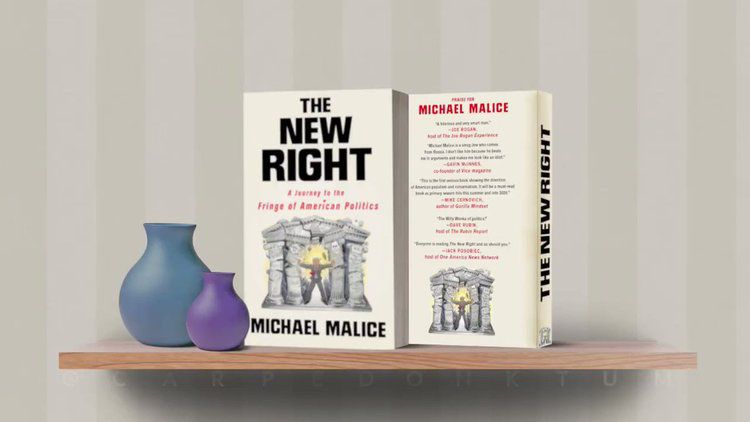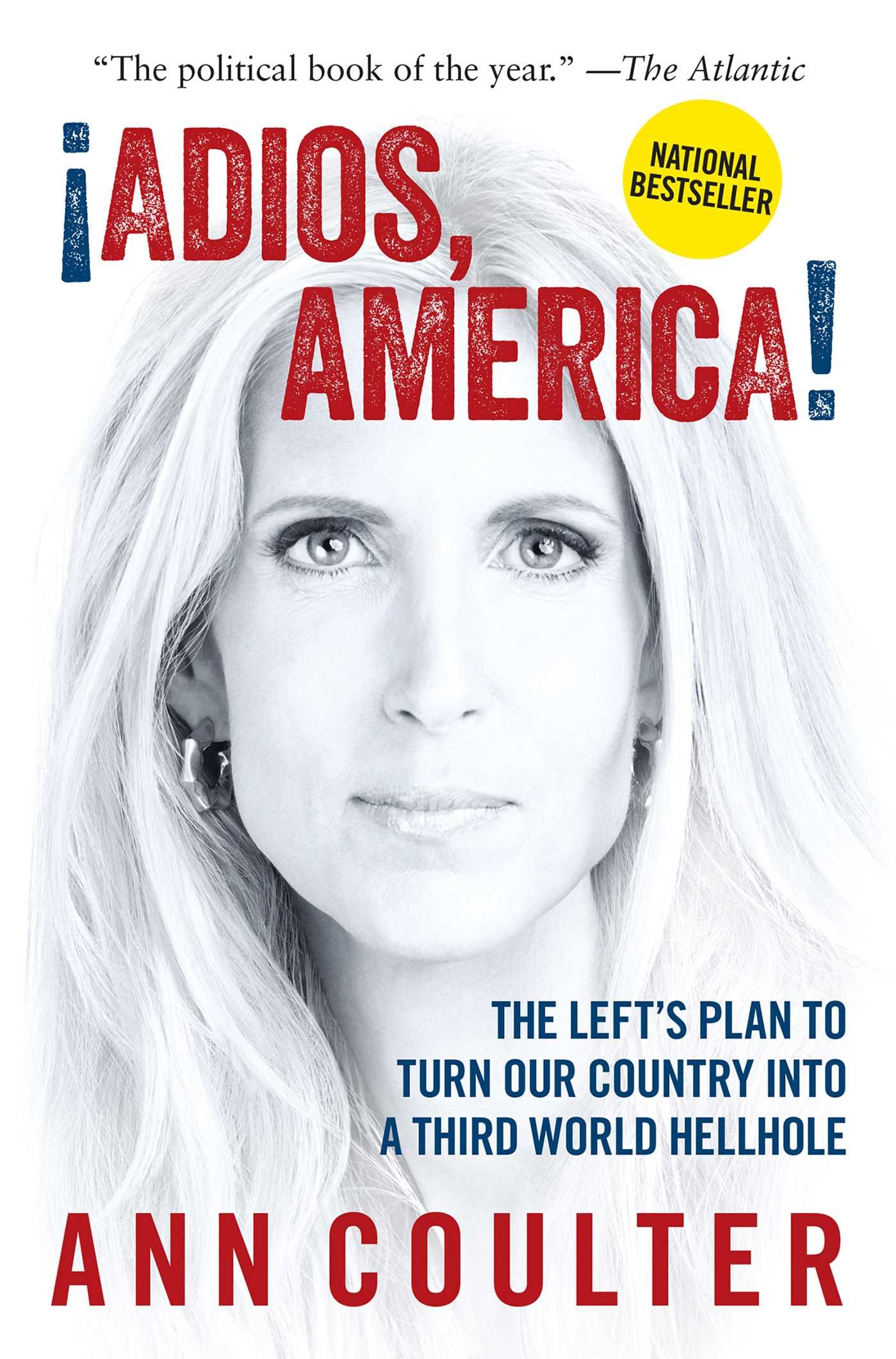![https://images-na.ssl-images-amazon.com/images/I/81tCdffrWrL.jpg]() Michael Malice’s book The New Right is interesting but he’s fundamentally wrong about the Trump presidency’s impact on American politics. “In my view, the salient thing about the Trump presidency is how he has mainstreamed several formerly marginalized strands of right-wing thought and behavior,” he writes. Yet the Republican Establishment has largely co-opted Trump. Main Stream Media journalist enforcers, financial institutions, government officials and law enforcement are now far more aggressive against dissidents on the nationalist Right. Far from being undermined, “The Cathedral,” Mencius Moldbug’s term for the interlocking network of media outlets and universities that preach the egalitarian faith and manufacture public opinion, is more demanding than ever. Maybe that’s because they’re panicking, but the fact cannot be denied.
Michael Malice’s book The New Right is interesting but he’s fundamentally wrong about the Trump presidency’s impact on American politics. “In my view, the salient thing about the Trump presidency is how he has mainstreamed several formerly marginalized strands of right-wing thought and behavior,” he writes. Yet the Republican Establishment has largely co-opted Trump. Main Stream Media journalist enforcers, financial institutions, government officials and law enforcement are now far more aggressive against dissidents on the nationalist Right. Far from being undermined, “The Cathedral,” Mencius Moldbug’s term for the interlocking network of media outlets and universities that preach the egalitarian faith and manufacture public opinion, is more demanding than ever. Maybe that’s because they’re panicking, but the fact cannot be denied.
Malice defines The New Right as:
… A loosely connected group of individuals united by their opposition to progressivism, which they perceive to be a thinly veiled fundamentalist religion dedicated to egalitarian principles and intent on totalitarian world domination via globalist hegemony.
Excitable vocabulary notwithstanding, that’s about right. As Malice himself notes, the “Alt Right,” which he defines (debatably) as those who think race is an important issue, is simply a faction within a broader movement.
Though Malice doesn’t really explore this, the “Alt Right” and “Alt Light” once worked together. The break didn’t occur until Hailgate in November 2016. The Alt Right remained a coherent force even after Charlottesville until it was essentially crushed by government action, lawfare, defunding and deplatforming.
Malice a New York Observer columnist and talk show host, is a self-described anarchist, discovered the “New Right” the same way most others did—via the libertarian-to-AltRight pipeline. On a “secret” Facebook group mostly composed of Murray Rothbard reading anarchists, he saw links to VDARE.com and American Renaissance.
Malice draws on the writings of neoreactionary Mencius Moldbug and his concept of the “Cathedral,” whose “principle of organization,” in Moldbug’s words, is “the leftward direction itself.” Malice notes that conservatism (“progressivism driving the speed limit”) can’t halt this leftward trend, citing Robert Lewis Dabney’s famous description of American conservatism as “the shadow that follows Radicalism…. towards perdition.”
Malice recounts how National Review went from comparing homosexuality to necrophilia (!) in 1996 to championing same-sex marriage in 2015. “The point isn’t how offensive such an article might be in retrospect,” Malice writes. “The point is how blithely conservatives will adopt progressive ideas and not bat an eye about it, considering the new stance a mere evolution.”
Malice writes the “New Right” can “be defined as precisely those who were driven from mainstream conservatism,” including of course, our own Peter Brimelow and John Derbyshire. For that reason, Malice is correct to say the “New Right actually isn’t all that new” and that its roots lie in the alliance between the paleolibertarians and paleoconservatives during the 1992 Buchanan campaign.
In my view, the best part of the book is Malice’s analysis of anti-democratic thinkers, including Gaetano Mosca, Georges Sorel, Robert Michels, and Vilfredo Pareto. This is covered in the same chapter that covers “game” and “pick-up artists,” and Malice makes it work.
I was taken aback when Malice said that the book he’d recommend to everyone else “was precisely the book Mencius Moldbug recommends above all others: The Machiavellians [PDF]by James Burnham.” I’d say the same. Alas, Burnham’s most influential pupil, the man Patrick J. Buchanan called the “Clausewitz of the Right,” Sam Francis, is barely mentioned, though Jim Goad and Gavin McInnes receive extensive coverage in later chapters.
![https://images-na.ssl-images-amazon.com/images/I/816n28MlHRL.jpg]() Malice reports attending the 2016 VDARE Christmas Party, where “everyone at the event was quite friendly.” (We are!) He calls Adios America by party attendee Ann Coulter “the most influential book of the 2016 presidential campaign” and gives a reasonably fair accounting of our arguments.
Malice reports attending the 2016 VDARE Christmas Party, where “everyone at the event was quite friendly.” (We are!) He calls Adios America by party attendee Ann Coulter “the most influential book of the 2016 presidential campaign” and gives a reasonably fair accounting of our arguments.
Unfortunately, he’s also probably right that “Coulter and VDARE can be considered the furthest edge of the Overton Window.” Malice says one party attendee “blanched” when he said he was an New York Observer columnist—he no doubt feared being outed, because “supporting VDARE was akin to being gay fifty years ago; not just a firing offense but also a perversion of what is holy.” Malice’s characterization of the Left as fundamentally religious is correct.
Malice is oddly flippant when it comes to American Renaissance’s Jared Taylor. He says Taylor’s “like William F. Buckley without the smugness and smarm” and “very hard to dismiss.” Yet while Malice doesn’t straw-man Taylor himself, he does straw-man Taylor’s arguments.
Malice says that blacks’ higher crime rates could be explained by factors other than race. However, he says, it’s hard to examine these issues or fight crime even in a colorblind way when “a religion that regards any criticism of minorities as a taboo… has clout.” Yet how is that “religion” to be overcome if white identity is forbidden?
Malice bizarrely argues that IQ doesn’t equate to good countries because “the undisputable fact is that the worst butchers in human history… all came from populations that white nationalists regard as being highly intelligent.” Is this true of the genocide in Rwanda or the crimes of Idi Amin? Besides, dismissing IQ because smart people might kill you is absurd. As Garret Jones showed in Hive Mind, national IQ has a huge impact on quality of life.
Malice argues whites have fought among themselves throughout history. In response to Taylor’s argument that the Founding Fathers were essentially white nationalists, Malice says the main dividing lines during the country’s early years were the state borders themselves. Perhaps, but the North-South tensions that ultimately caused the Civil War were mostly driven by the differences between a slave society ruling over blacks and a society composed overwhelmingly of free whites. Racial diversity didn’t help.
As Jared Taylor asks, “[W]hy add problems?” To this, Malice retorts, “What country hasn’t had problems?” Ok, but the problems of Switzerland and Swaziland are different.
Malice says an overwhelmingly white state already exists—New Hampshire. “I don’t know any measure where New Hampshire can be considered some sort of Shangri-La,” sneers Malice (an adoptive New Yorker). Yet New Hampshire is being targeted by the MSM because it is “too white” and has few social problems. Compared to most Central American countries, or to some parts of California, New Hampshire is paradise.
Throughout the book, Malice refers to his Jewish identity—like Max Boot and Cathy Young, he was born in the Soviet Union and brought to the U.S. by his family presumably under the Lautenberg Amendment—and though he’s clearly willing to take a joke, he doesn’t like people who are hostile to his ethnic group. (Who does, other than affluent liberal whites?)
However, even in Israel, the self-defined “Nation-State of the Jewish People,” there are massive divisions among Jews that lead to violence. Yet it would be absurd and offensive to conclude from this that “Jewish” or “Israeli” identity isn’t important. Jews fighting amongst themselves doesn’t erase distinctions between them and non-Jews. Besides, even among Jewish Israelis, race matters.
Still, Malice makes a fascinating argument when he says the marginalization of white males may lead to increased creativity. We’ve seen that online. However, that presupposes that white males will still have an outlet for that creativity. Increasingly, any activity whites disproportionately engage in, even craft brewing, is targeted by smear campaigns.
Here, we see the book’s main problem. Malice suggests social media and technological changes allow people to get around attempts to impose control from above. However, he doesn’t really cover the repression that has occurred since President Trump’s election. Malice chronicles the rise and fall of Milo Yiannopoulos briefly but dismisses Milo’s fall as a “speedbump.” It wasn’t to Milo—or to the new audience he was introducing to Dissident Right ideas.
It’s even doubtful the Facebook group that introduced Malice to these ideas would even be suffered to exist today. If it did, undoubtedly someone would rat out the members to the MSM so we could get breathless doxes of random people.
If anything, the barriers between the “New Right” and the Conservative Movement have increased since President Trump was elected. President Trump allows the Left to claim the romantic mantle of #Resistance, without facing any actual resistance. Though he’s often called “authoritarian,” President Trump is no Caesar—he’s just Tweeter-in-Chief.
The White House staff is filled with “Never Trumpers,” to the shocked disappointment of many supporters. The main legislative accomplishment was an unpopular tax cut any Republican would have pushed. Instead of challenging racial taboos, the Republican Party is still trying to prove it is not racist. Many figures with crossover appeal between the mainstream conservative movement and the Dissident Right—Milo and also Lauren Southern--for example—no longer exist.
One key reason: the blatant Democrat mugging of the 2017 Charlottesville Unite The Right Rally and subsequent repercussions. Incredibly, though Malice meets with participants, he doesn’t analyze the political impact of Heather Heyer’s death. It’s as if he wrote that chapter the week of the rally and never revisited it.
“Charlottesville” is now something of a Sacred Myth to the “evangelical left” Malice decries, yet it goes mostly unexamined. This event increased the faith progressives have in “the Cathedral’s” message, because it created the bogeyman of a “Nazi movement” on the march.
The New Right is worth reading, but it’s surprising that it came out in May 2019. It mostly reads like something from early 2017.
The MSM hasn’t been chastened: it has grown more hysterical. “The Cathedral” is apparently far more powerful than the White House. Individuals around the country live in fear of a hit piece if they say or tweet the wrong thing.
The ideas discussed in The New Right are more marginalized than they were in 2015 because adherents are less able to express them. The sole (but important) exception is Tucker Carlson, the real leader of the American Right but someone Malice mentions only in passing.
However, one can’t argue with Malice’s conclusion. He quotes Camus on Sisyphus, who recognizes the absurdity of his condition but finds fulfillment in the struggle towards the heights.
The New Right has been suppressed through naked force. This should give us hope. If the boot slips off our necks for even a moment, victory isn’t just likely, but virtually certain. 2016 was just the beginning.
James Kirkpatrick [Email him |Tweet him @VDAREJamesK] is a Beltway veteran and a refugee from Conservatism Inc.




 Michael Malice’s book
Michael Malice’s book  Malice reports attending the 2016 VDARE Christmas Party, where “everyone at the event was quite friendly.” (We are!) He calls Adios America by
Malice reports attending the 2016 VDARE Christmas Party, where “everyone at the event was quite friendly.” (We are!) He calls Adios America by 








